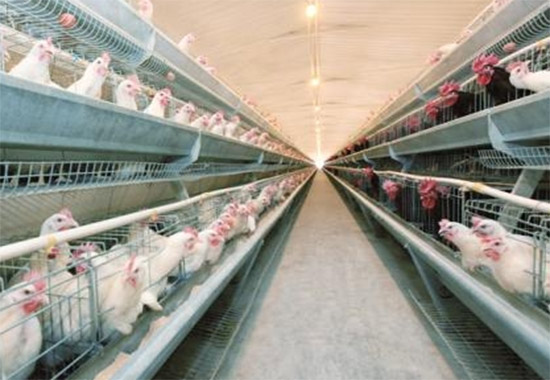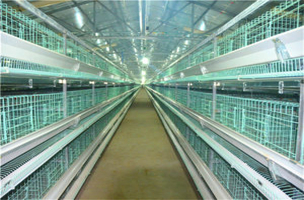What should you pay attention to when raising chickens in layer cages?
- Published in Poultry raising equipment
In the process of raising chickens in layer chicken battery cages, the light is also very important for the chicken flocks. Farmers need to properly illuminate the chicken flocks to achieve good results. Therefore, in the process of lighting the chicken cages, most of them need to use artificial light, which is beneficial to the healthy growth of the laying hens. The following reminds farmers of the points that need attention when artificially lighting the chicken flock.
1. The light should be stable: the time that the average farmers choose to compensate the light for the laying hens starts from the age of 19 weeks. When you start setting the lighting time, you should add it slowly from short to long, and add half an hour a week. Farmers should be aware that when the light is added to 16 hours a day, it should be kept in stable light. Then the light of the day can't be long or short. The good way is to make up each time sooner or later.

2. The intensity should be appropriate: the farmers should pay attention when selecting the light intensity of the lighting equipment. For normal laying hens, the required light intensity is generally 2.7 watts, but the egg cage culture uses a multi-layered three-dimensional culture. Therefore, the bottom group of chickens are not easy to feel the light, so it should be improved when setting the light intensity, generally 3.3 to 3.5 watts per square meter.
3. Illumination should be uniform: the farmers should pay attention to the time when the equipment is equipped with light. The author suggests that the bulbs in the chicken houses of the farmers should be 40 to 60 watts, and then the height of the lamps should be about 2 meters. The distance between the light bulbs is recommended to be about 3 meters. Other farmers should pay attention to the fact that if your house requires more than two rows of light bulbs, they should be arranged in a cross so that it is good for the light, evenly against the wall. The distance should be half of the bulb spacing. Also note that the damaged bulb should be replaced at any time and the bulb should be scrubbed once a week to maintain proper brightness in the house.
4. It is advisable to use red light: there are many kinds of light colors in the lighting equipment. The farmers should pay attention to the difference of the light color of the lighting equipment when they are selected, and the wavelengths are different. Tests have shown that hens raised under red light have higher egg production rates than hens under other light conditions when other conditions are the same, so it is recommended that farmers choose red light equipment.
The above four points are described for the farmers. In the process of raising chickens in layer chicken cages, the “four attentions” when the laying hens are used to make up the light, the farmers must make reasonable plans to make up the light. The laying performance of laying hens lays the foundation.

